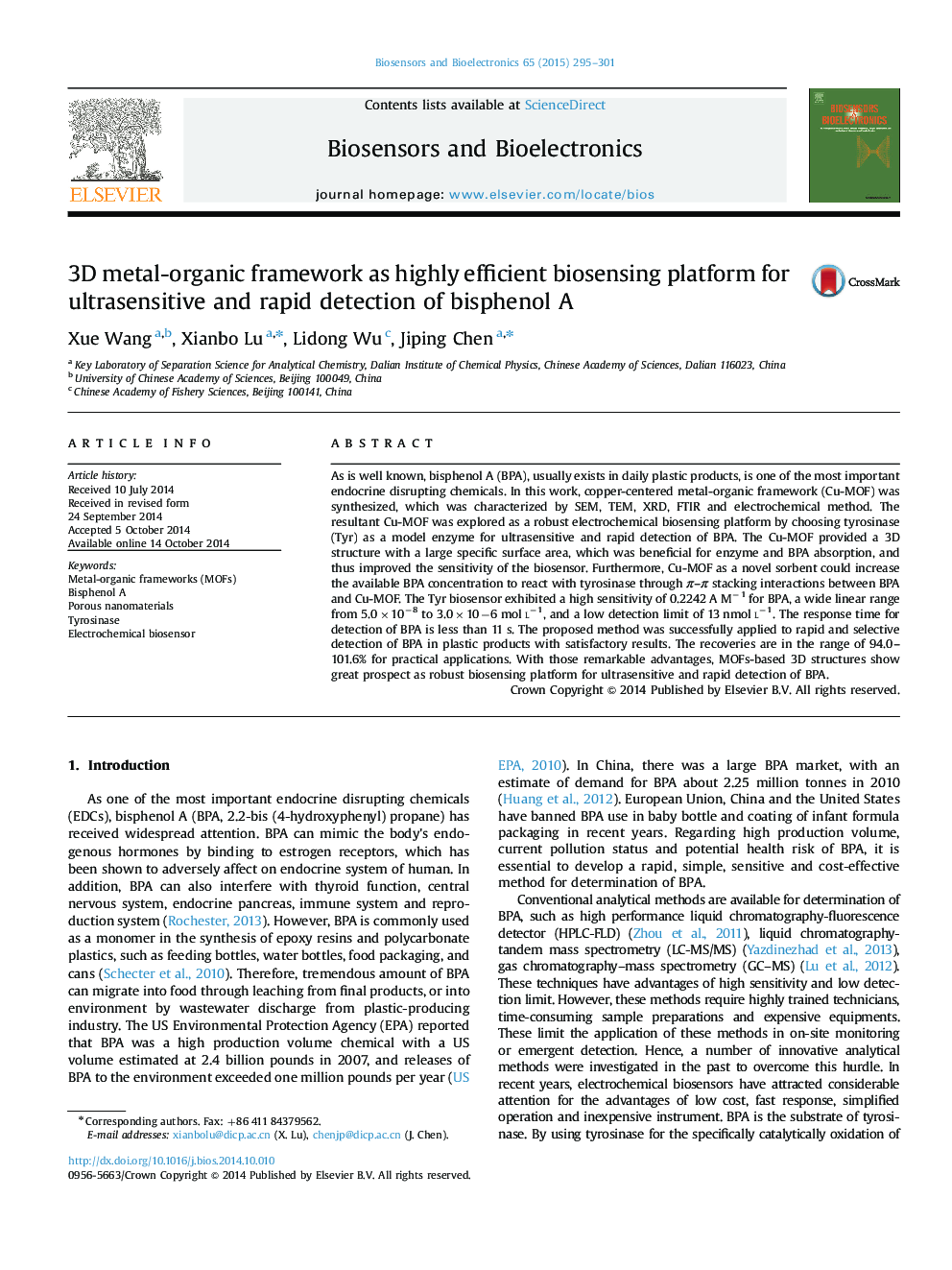| Article ID | Journal | Published Year | Pages | File Type |
|---|---|---|---|---|
| 866387 | Biosensors and Bioelectronics | 2015 | 7 Pages |
•Cu-MOF was synthesized and explored to construct a tyrosinase biosensor.•The Cu-MOF possesses >1000 m2 g−1 surface area and 3D interconnected channels.•The biosensor displayed ultrasensitive, rapid and selective response for Bisphenol A.•The biosensor method was successfully applied to determine BPA in plastic products.•MOFs-based 3D structures show great prospect as a robust biosensing platform.
As is well known, bisphenol A (BPA), usually exists in daily plastic products, is one of the most important endocrine disrupting chemicals. In this work, copper-centered metal-organic framework (Cu-MOF) was synthesized, which was characterized by SEM, TEM, XRD, FTIR and electrochemical method. The resultant Cu-MOF was explored as a robust electrochemical biosensing platform by choosing tyrosinase (Tyr) as a model enzyme for ultrasensitive and rapid detection of BPA. The Cu-MOF provided a 3D structure with a large specific surface area, which was beneficial for enzyme and BPA absorption, and thus improved the sensitivity of the biosensor. Furthermore, Cu-MOF as a novel sorbent could increase the available BPA concentration to react with tyrosinase through π–π stacking interactions between BPA and Cu-MOF. The Tyr biosensor exhibited a high sensitivity of 0.2242 A M−1 for BPA, a wide linear range from 5.0×10−8 to 3.0×10−6 mol l−1, and a low detection limit of 13 nmol l−1. The response time for detection of BPA is less than 11 s. The proposed method was successfully applied to rapid and selective detection of BPA in plastic products with satisfactory results. The recoveries are in the range of 94.0–101.6% for practical applications. With those remarkable advantages, MOFs-based 3D structures show great prospect as robust biosensing platform for ultrasensitive and rapid detection of BPA.
Graphical abstractFigure optionsDownload full-size imageDownload as PowerPoint slide
